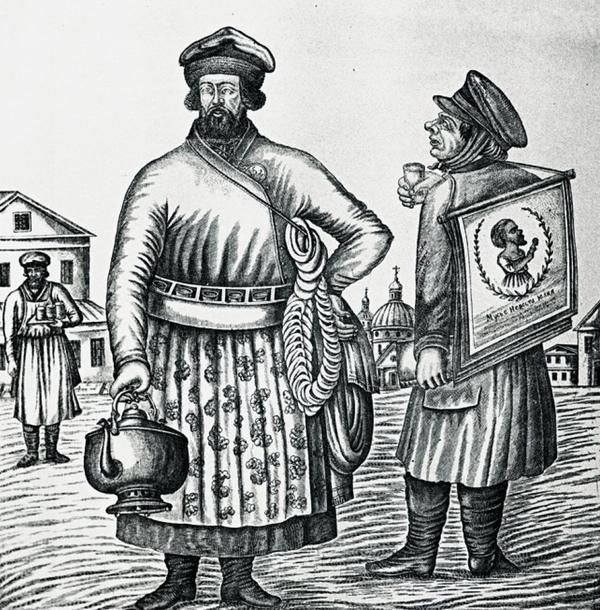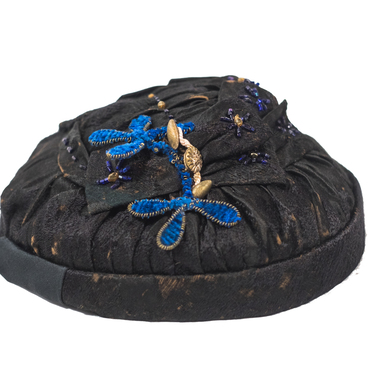A sbitennik is a device for making sbiten, essentially similar to a regular samovar, but fitted with a carrying handle and a pouring spout, like a kettle. Inside, such a vessel was divided into two isolated parts. Honey, aromatic herbs, and water were put into the tank next to the spout. The other part was for wooden chips and cones, which were then set on fire to heat the adjacent section.
Sbitennik
Creation period
Late 19th century
Dimensions
14.5 cm х 24 cm х 14.5 cm
Technique
Iron, wood, knocking out, turning work
Collection
6
Open in app#1
Sbitennik
#2
#5
Sbiten was a very popular drink of yesteryear, especially among the Old Believers. Its ingredients included water, honey, spices, and herbs, such as sage, St. John’s wort, and others. Hot sbiten had a warming and anti-inflammatory effect, so it was drunk in the winter. Cold sbiten was perfect for quenching thirst on a summer day.
#6
Sbiten was first mentioned in the chronicles in 1128: Grand Prince Vsevolod ordered to serve it at a boyar feast. The first recipe can be found in the 16th-century Domostroy: a code of recommendations for everyday life. For the Russian people, sbiten was something like tea or coffee until the late 19th century.
#3
Hot sbiten sellers
#4
Hot sbiten traders were usually part of the crowd at any festivities or fair. They were typically young and strong men since considerable physical strength was required to carry a sbitennik, bundles of bagels, and a bast waist belt with glasses. Such sellers were also called peddlers.
#7
The basis of the economic life of the Nevyansk district in the 18th and 19th centuries was the Nevyansk iron foundry. When making cast iron, refined iron, and products from them, a lot of metal remained at the plant, which could be used by artisanal blacksmiths.
#8
Blacksmithing was one of the most widespread activities at the Nevyansk plant. This had to do with its specialty and the presence of experienced workers engaged in a similar business and raw materials for production. The factory craftsmen sold their products at the Nevyansk fairs, which were hosted twice a year, and at the weekly markets which took place on Sundays.
#9
State Autonomous Cultural Institution of the Sverdlovsk Region "Nevyansk State Historical and Architectural Museum"
read morehide
00:00
00:00
1x
Sbitennik
Creation period
Late 19th century
Dimensions
14.5 cm х 24 cm х 14.5 cm
Technique
Iron, wood, knocking out, turning work
Collection
6
Open in app
Share


